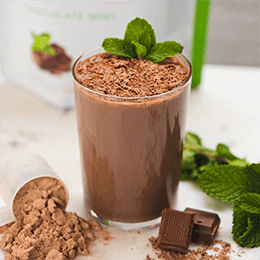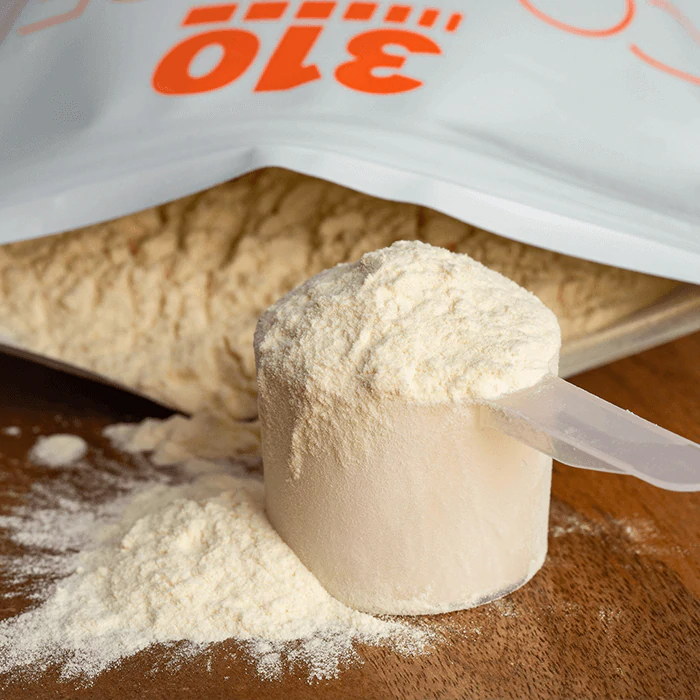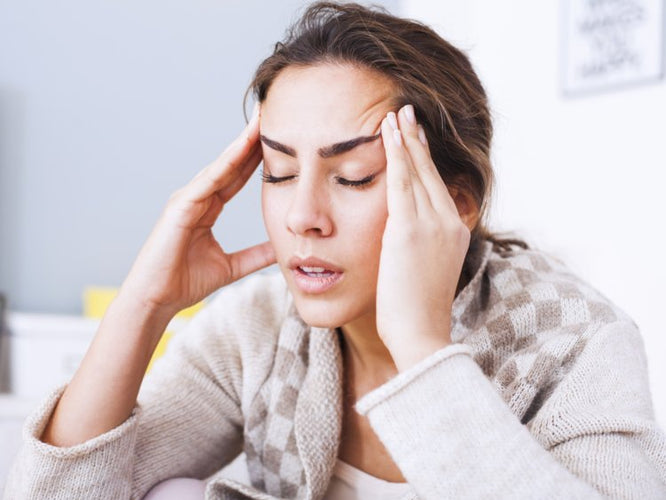If you’re interested in starting the popular high-fat, low-carb dietary program known as keto, you may be turned off by the idea that you may get initial symptoms known as “the keto flu”. But although it sounds a bit scary, is it really that bad? And is there anything you can do to prevent it all together?
In actuality, there’s a lot you can do to fend off any less-than-pleasant effects when you first start the keto diet; And if you do end up with some uncomfy symptoms (which some lucky ones don’t at all), there are things you can do to lessen them and cross over to the other side (aka the keto bliss that ketosis becomes).
Read on to find out the secrets to preventing the keto flu, plus get tips for feeling your best while you’re adjusting to low-carb living and fighting off your sugar addiction.
First: Why Do You Cut Carbs on Keto?
To understand the keto flu, first you need a quick lesson on keto diet basics. While your body typically runs on glucose, (or carbs), when you greatly reduce them in your diet (to 30g or less of net carbs per day), your body finds a new source of fuel. And this new fuel is one that many keto advocates say is a superior source...
Without the glucose your body is used to, it starts to burn fat for fuel, and your liver produces acidic chemicals called ketones. When this happens, your body enters a state called ketosis –an enhanced fat-burning state which is the goal of anyone who is on the keto diet.
What is the Keto Flu?
While eventually people report increased energy and concentration levels, along with less hunger while in ketosis, your body first needs to adjust to your new low-carb lifestyle. Switching to using ketones for fuel is literally transforming to a different metabolic process in your body, and you have to be patient in the process and stay strong!
That being said, the keto flu doesn’t happen to everyone, and for the people it does happen to, it’s a normal, natural process brought on by a change in your diet. For most people, it will pass almost as quickly as it came.
Keto Flu Causes
Although everyone with keto flu symptoms will have a different experience based on previous lifestyle choices, there are 4 main potential causes of the keto flu:
- Adapting to running on fat for fuel instead of carbs
- Losing electrolytes from water loss/dehydration
- Withdrawal from carbs and sugary foods
- Not getting enough vital vitamins and minerals
For most people, symptoms typically only last about a week, though for some they may stick around a bit longer.
Keto Flu Symptoms
So, what do we mean when we say, “the keto flu”? Following are some possible symptoms you may experience when you start keto:
Stomach:
- Nausea
- Vomiting
- Stomach pain
Bowels:
- Constipation
- Diarrhea
Head:
- Headache
- Irritability
- Poor concentration
Full Body:
- Weakness
- Dizziness
- Muscle soreness
- Sugar cravings
5 Ways to Prevent or Lessen the Keto Flu
In addition to the more common symptoms that people experience in early keto, like keto flu headache and diarrhea, there are also less common ones, like keto flu sore throat. In the next section, we’ll talk about prevention and ways you can find relief if you’re fighting with these things.
Now that you know what you might experience when you first switch over to very low-carb living, let’s find out how you can prevent it completely or find relief. Is there a keto flu cure? Let’s find out!
1) Drink a Ton of H2O
When you go keto, your body initially loses quite a bit of water weight; This is because stored carbohydrates in your body hold onto water, and when you reduce the amount of carbs in your diet, the water is released.
Therefore, you can actually become dehydrated when you start the keto, unless you’re very intentional about drinking lots of water. This is particularly important if you have keto flu diarrhea, which can cause even more fluid loss, so you need to replenish.
One ideal way to stay hydrated on the ketogenic diet is with low-carb meal replacement shakes. These yummy drinks not only give you the H2O you need, but they also include protein, fiber, vitamins, minerals, and superfoods for increased energy and mental stamina while you’re recovering.
2) Keep Moving, But Keep It Light
If you’re feeling under the weather when starting keto, it’s not the time to go hard at the gym! In fact, doing any type of intense exercise (even if it’s something you’re familiar with) is likely going to make certain symptoms worse. This includes fatigue, muscle cramps and stomach discomfort.
But, not doing any type of physical activity will likely make you feel just as bad. Instead, try light movement such as walking, yoga, or leisurely biking, which may improve symptoms by getting your metabolism going.
You can check out these must-follow Instagram Influencers for an extra dose of fitness inspiration.
3) Replace Electrolytes
It’s important to increase your intake of certain minerals when starting keto, to ensure you get enough. In particular, you’ll want to get more sodium, potassium and magnesium – since your body may end up with less of these electrolytes on the strict dietary regimen.
While on keto, levels of insulin decrease, causing the kidneys to release excess sodium from the body; In addition, the keto diet restricts many foods that are high in potassium (like fruits, beans and starchy veggies).
To battle this, eat potassium-rich foods that are allowed on keto, such as green leafy veggies and avocados. Many of these items are also high in magnesium – which can especially help if you’re having headaches, muscle cramps or trouble sleeping.
An ingenious way to get all three minerals at once is with 310 Lemonades, which contain all 3 electrolytes, along with a caffeine-free green tea extract to boost fat-burning. The lemonades have no artificial sweeteners and only 10 calories per serving; Plus, they come in a tempting variety of flavors, and they’re great for on-the-go.
4) Get Your Shut Eye
When you don’t get enough sleep, it raises levels of the hormone, cortisol, in your body. This can negatively affect your mood and make keto-flu symptoms (such as fatigue and irritability) even worse.
To ensure you get enough rest, don’t have caffeine later in the day, and put a relaxing bedtime routine in place to help you fall asleep and stay asleep. Always factor in 7-8 hours of sleep per night for optimal health.
5) Make Sure You’re Getting Enough Fat
Finally, make sure you’re following the keto diet correctly, and getting the higher fat amounts that you need. We recommend that you calculate your macronutrients using a keto calculator so you know exactly how much protein, fat and carbs you should be eating each day.
The reason you increase your fat so drastically on keto, is because it can help you reduce cravings and feel more satisfied. Plus, when you eat more fat along with moderate protein, your blood sugar stays balanced, which can also help reduce keto flu symptoms.
If you used to eat a ton of carbs before keto, you may need to cut them back more gradually – especially if you’re having a lot of keto flu symptoms. By doing this, you help reduce the shock on your body and make the transition much smoother, even if it takes a little longer.
Did you enjoy this article on the Keto Flu? Our 310 Keto Kit can help you kick any uncomfortable early keto side effects by keeping you hydrated, boosting energy, replacing electrolytes, and crushing sugar cravings. Find out more, here!
Sources:
https://www.healthline.com/nutrition/keto-flu-symptoms https://www.health.harvard.edu/blog/what-is-keto-flu-2018101815052 https://perfectketo.com/keto-flu/#keto-flu-causes














